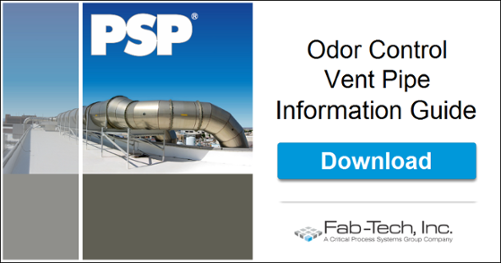Importance of Ventilated Odor Control in Wastewater Biosolids Areas
Biosolids are a nutrient-rich organic material produced when sewage sludge is extracted from wastewater and treated with several processes, including one to reduce pathogens. It can have an organic matter content of up to 50% and is often used as an alternative to conventional fertilizer.
/DC%20Water%20Blue%20Plains%20PSP%20Installed.png?width=1008&name=DC%20Water%20Blue%20Plains%20PSP%20Installed.png)
In recent years a correlation has been drawn between population increases, biosolids production increases, and biosolids-use in agricultural applications. In 2004, 6.5 million dry metric tons of biosolids were produced in the United States, and approximately 60% of the biosolids were land-applied to US soils.
Odor Control Challenges
Despite the benefits of biosolids land application, odors generated by this resource have raised a level of public opposition toward such programs and called into question their future viability. In a fact-sheet released by the Environmental Protection Agency, the EPA stressed a need for greater public support of biosolids programs and land application sites.
"Biosolids producers should make every effort to minimize odors at the application site because the long term efficacy of land application depends on it. A dramatic increase in local ordinances that ban or restrict the use of biosolids has been observed in recent years as a result of odor complaints..."
"...Federal Biosolids Regulations do not regulate odors because it was believed that odors from land application did not present human health effects. It has been said, however; Biosolids odors may not pose a health threat, but odors are killing public support for biosolids recycling programs (Toffey, 1999). The most cost-effective approach to odor control may be to examine the operation and maintenance practices at the processing facility."
In other words, the most direct path to improving public opinion of biosolids is to begin with effective odor control systems at the treatment plants themselves.
Odor Control Solution
While there are a number of different precautionary measures that can be used to reduce the chances of biosolids odors reaching surrounding communities, none are more effective than actually neutralizing the odors at the source. One of the best ways to deal with foul air in wastewater treatment, particularly in the biosolids management areas, is to introduce coated stainless steel duct air-handling systems. Air handling systems serve a dual purpose:
1) First, they facilitate controlled ventilation which is so critical to the treatment process. The air that's drawn through the ventilation ductwork helps to keep air circulating through the biosolids areas, which maintains necessary aerobic conditions. If conditions become anaerobic, the digestion process will produce worse odors than no digestion at all. If aerobic conditions are maintained, the sludge can be treated to be a usable biosolid while producing fewer and less intense odorous compounds.
2) In addition to maintaining aerobic conditions, proper air-handling systems also allow wastewater treatment plants to convey foul air and odorous compounds to areas where the odors can be treated by dedicated scrubbers and/or biofilters prior to being exhausted from the facility.
Conclusion
Wastewater odor control should be a top priority for wastewater treatment plants in general, and particularly for those engaged in biosolids management and recycling programs. Biosolids are proving to be a valuable resource in agricultural applications around the country, and the future success of such programs will depend heavily on improved public opinion as outlined by the EPA.
Fab-Tech's PSP odor control exhaust duct is the leading innovative odor control solution in the face of this challenge. It stands unsurpassed in it's:
- Installation labor savings & time to install
- Foul air containment & corrosion resistance
- Plant safety & fire protection
- Low maintenance
- Chemical compatibility & system adaptability
If you would like more information about PSP® odor control vent pipe and duct, please feel free to download our general information guide below:
OR
Visit Our Wastewater Treatment Odor Control Page
Sources:

